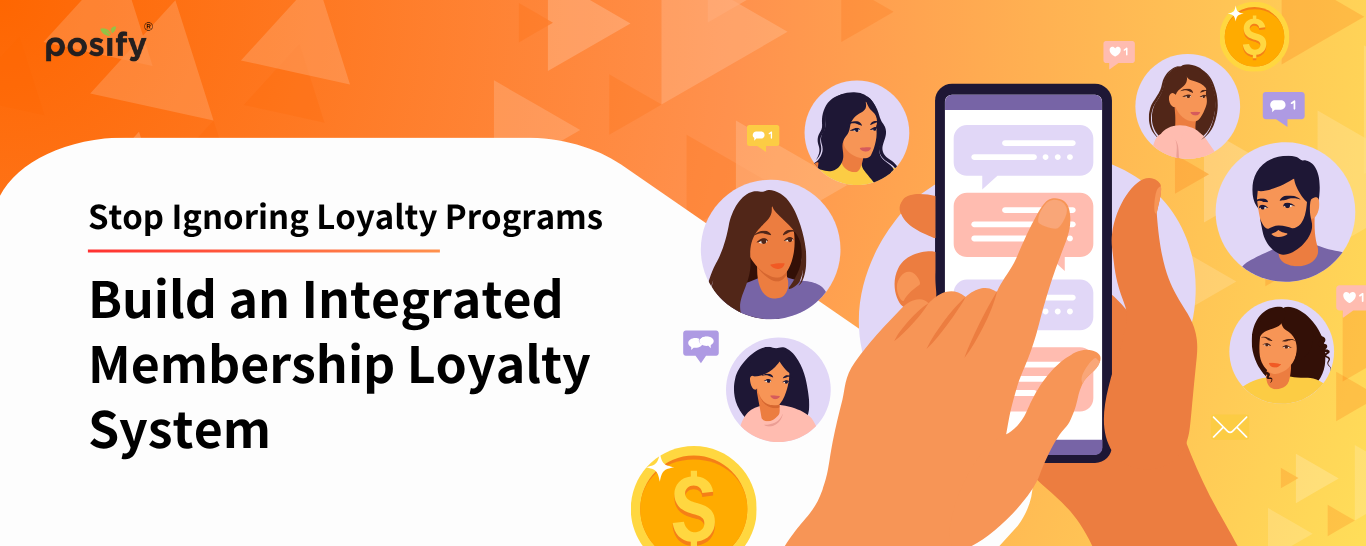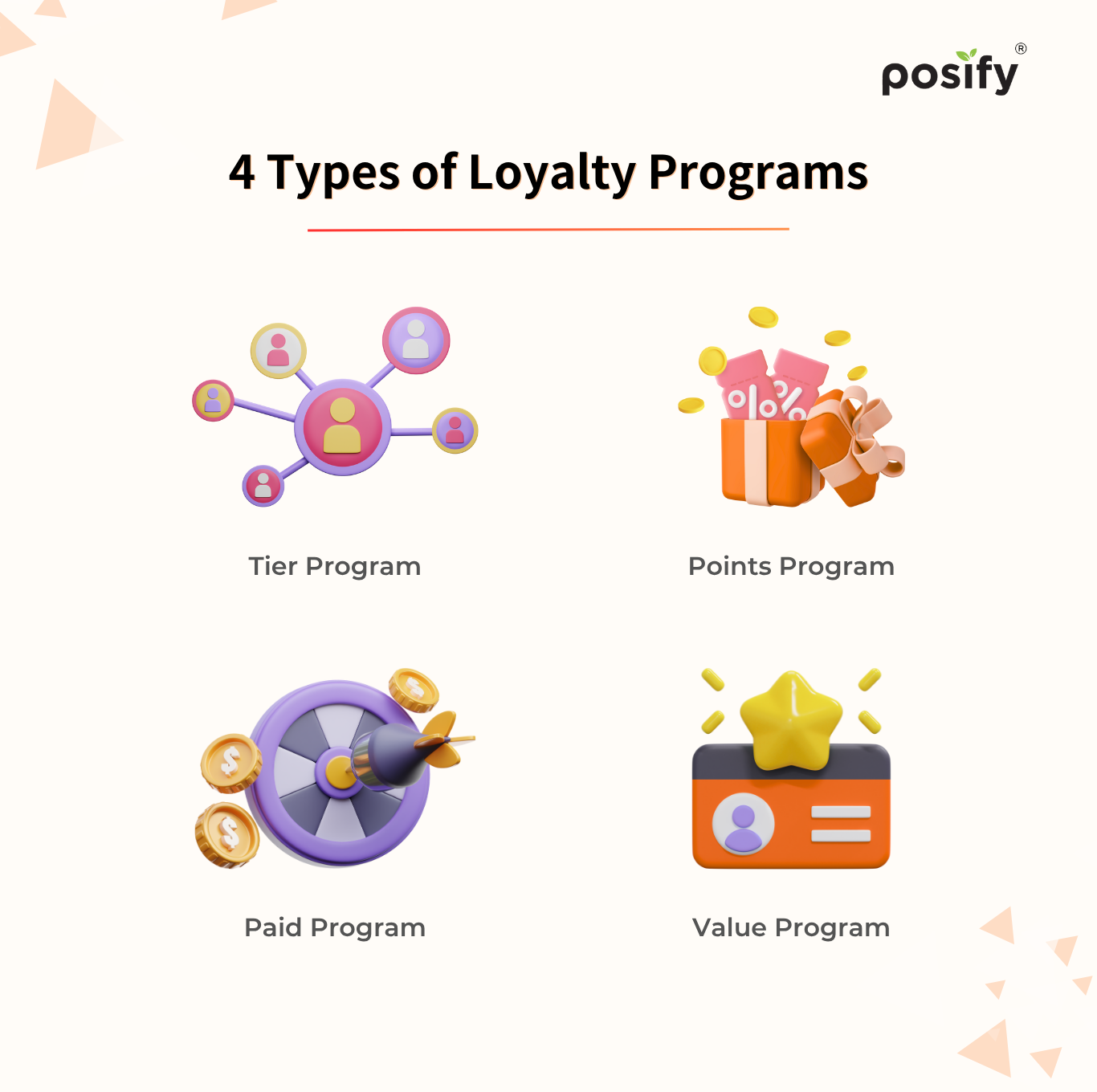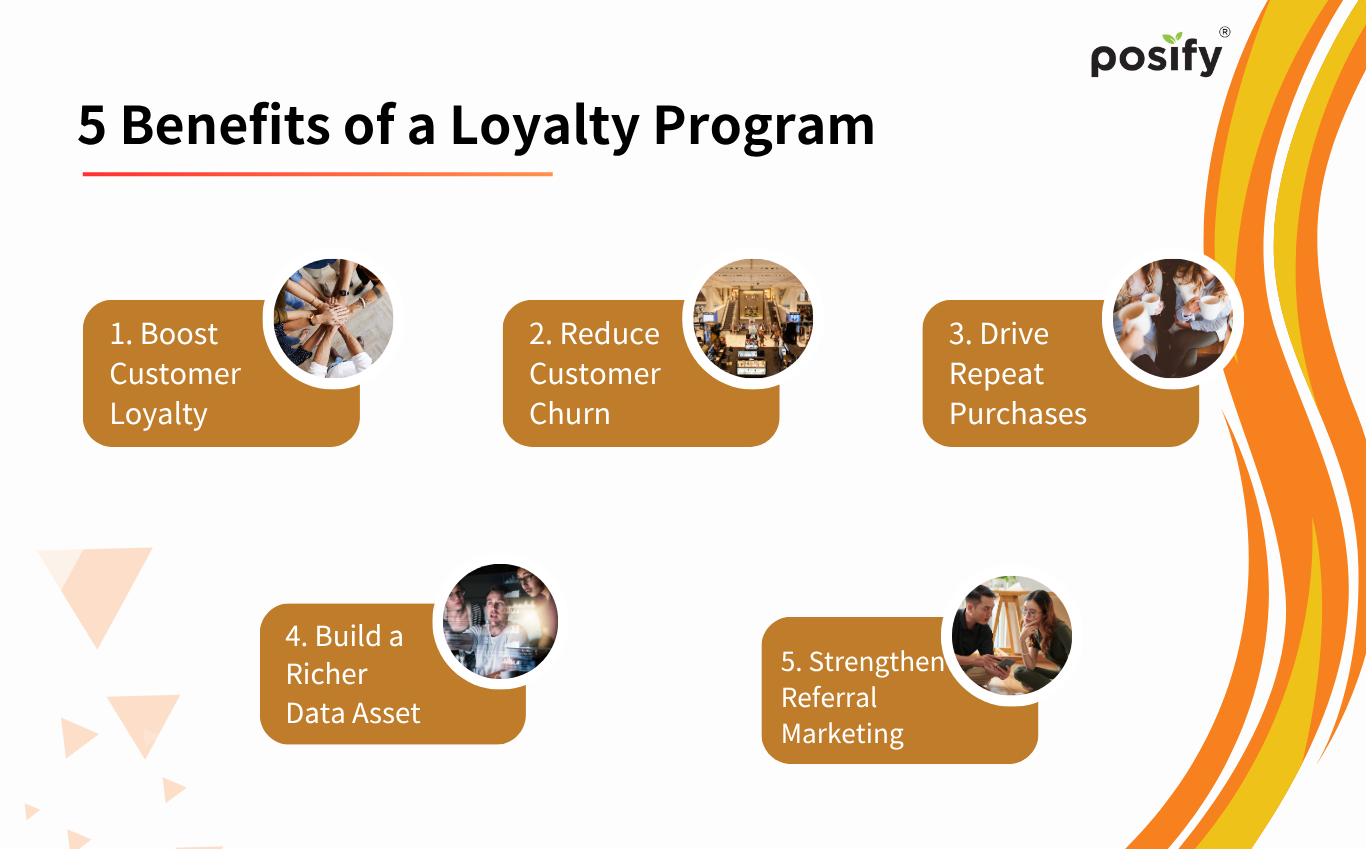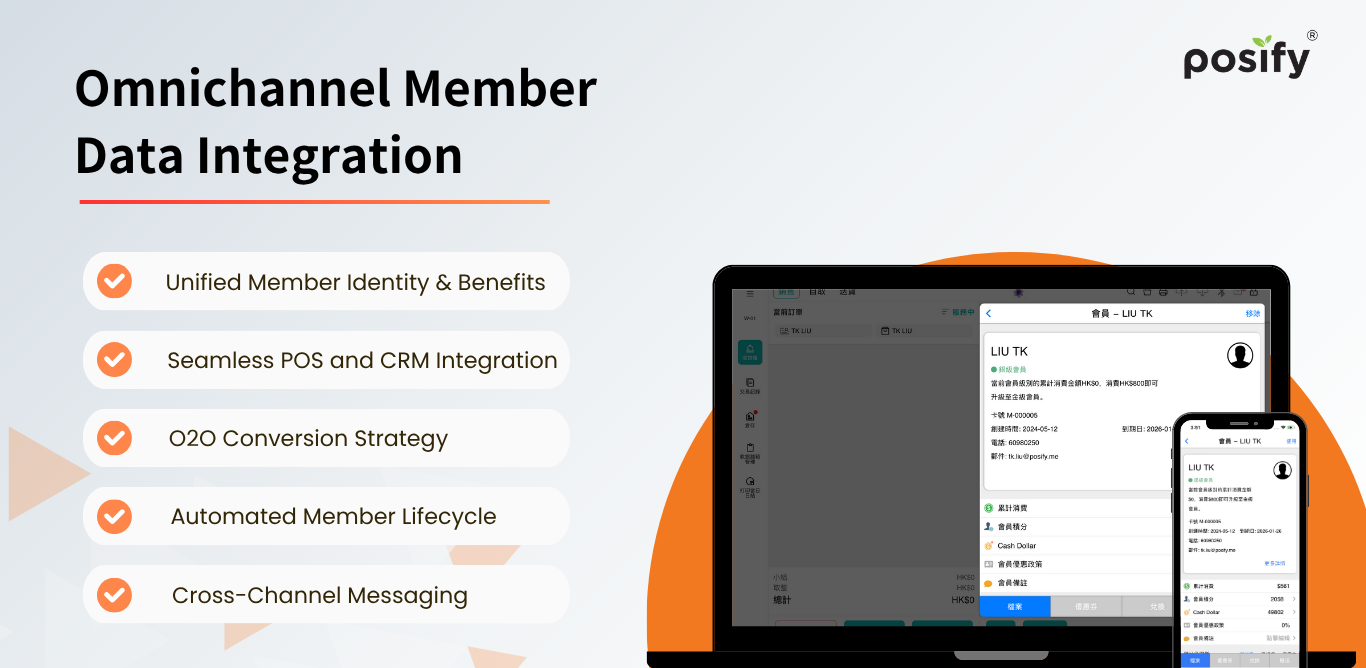Stop Ignoring Loyalty Programs! Build an Integrated Membership System

In today’s fiercely competitive business landscape, member engagement has evolved far beyond basic discount vouchers. It’s now a dynamic ecosystem driven by data, interaction, and customer experience. A well-designed membership and points system not only grows your customer base but also boosts loyalty and unlocks long-term customer value (Customer Lifetime Value, or CLV), ultimately driving sales.
At Posify, we’re breaking down effective membership strategies to help businesses create a truly competitive loyalty ecosystem.
Why Member Engagement Is Core to Brand Competitiveness
Member management is essentially about collecting, analysing, and applying customer data to build meaningful, long-term relationships. In a world driven by data and experience, consumers expect more than just a product—they want personalised, high-quality service and connection.
A comprehensive loyalty system delivers tailored services and exclusive rewards, fostering a sense of belonging that turns one-off shoppers into loyal fans and brand advocates.
4 Common Types of Loyalty Programs
Many retailers mistakenly believe that “member marketing” is just about handing out coupons or running discounts. In reality, a well-designed membership system doesn’t just drive repeat purchases — it builds true brand loyalty and turns customers into vocal brand advocates.
Loyalty isn’t driven by discounts alone. A strategic loyalty program helps build deeper relationships with customers and drives long-term value.
Here are four of the most common and practical loyalty models, so you can choose the one that best suits your business:

1. Tiered Loyalty Programs
Members are grouped into different levels (e.g. Silver, Gold, Platinum) based on spend or accumulated points. The higher the tier, the more valuable the member — and the more exclusive the rewards, such as greater discounts, event invites, VIP support, or birthday perks. This system encourages customers to spend more frequently or in larger amounts to “level up,” increasing loyalty over time.
Example: Starbucks Rewards
Starbucks members earn “stars” with each purchase. Once they hit a threshold, they can redeem stars for free drinks. High-spending members are upgraded to Gold status, unlocking personalised offers, free drink vouchers, birthday treats, and more. This tier system keeps customers coming back to reach and retain higher levels.
2. Points-Based Programs
With every purchase, customers earn points based on how much they spend. These points can later be redeemed for discounts, free products, or exclusive gifts. Programs often have tiered redemption thresholds and run double-points promotions to boost engagement. It’s a simple but effective way to keep customers coming back and interacting with the brand.
Example: Watsons Membership Program
Watsons members earn points with every qualifying purchase. These points can be redeemed for discounts, products, or access to member-only promotions. The model works especially well in high-frequency retail environments and can be supercharged with limited-time campaigns like “double points day.”
Click to Learn About Posify’s 3Rs Member Marketing Strategy
3. Paid Loyalty Programs
In this model, customers pay to become members and unlock premium perks. If the benefits clearly outweigh the cost, many are happy to pay. Members typically get site-wide discounts, exclusive products, faster shipping, or priority support. This type of program works well for businesses with high customer retention or frequent buyers — think e-commerce or niche retail brands.
Example: Amazon Prime
Amazon Prime is one of the world’s most successful paid loyalty programs. For an annual fee, members get free express shipping, access to Prime Video, member-only discounts, and more. The key to its success? The value far exceeds the cost — encouraging frequent purchases and long-term brand loyalty.
4. Value-Based Loyalty Programs
This model builds emotional loyalty by aligning with customers’ values. Beyond discounts, it focuses on shared causes, community engagement, and meaningful experiences. Customers feel like they’re contributing to a bigger purpose, which increases emotional attachment to the brand. Ideal for businesses that prioritise brand identity and social impact.
Example: Patagonia's Repair Program
Patagonia goes beyond outdoor gear — it champions sustainability and environmental activism. Patagonia's Repair Program, known as Worn Wear, which encourages clothing repair and reuse and donations to environmental groups make customers feel like part of a mission. Many people support the brand because they believe in what it stands for, creating loyalty that’s far deeper than price-based incentives.
5 Benefits of a Loyalty Program
The customer data gathered through a well-run membership system forms a powerful foundation for product improvement, market insights, and personalised marketing. It’s not just a marketing tool — it’s core infrastructure for any business shifting toward data-driven decision making. Member engagement should be viewed not as a short-term sales tactic, but as a long-term strategy for sustainable growth.
Here are five major benefits of membership management:

1. Boost Customer Loyalty
A good membership program delivers a more consistent and personalised experience. Exclusive perks like birthday rewards, member-only deals, and points-based systems make customers feel valued and increase their willingness to stick with your brand. Member events like early access to new products or VIP previews help strengthen emotional ties and turn customers into loyal fans.
2. Reduce Customer Churn
It’s cheaper to retain existing customers than to attract new ones. A well-structured loyalty program increases engagement and reduces the chance of customers switching to competitors. Regular touchpoints — via email, app notifications, and tiered rewards like renewal gifts — keep your brand top of mind and encourage ongoing interaction.
3. Drive Repeat Purchases and Cross-Selling
Membership systems track past purchases and preferences, enabling businesses to deliver tailored product suggestions and targeted promotions. This boosts conversion rates and unlocks cross-sell opportunities — for instance, recommending cosmetics to skincare buyers or sending timely repurchase offers based on buying frequency.
4. Build a Richer Data Asset and Sharpen Market Insight
Loyalty programs help businesses accumulate valuable customer data — from shopping habits to demographic trends. Analysing this information allows for smarter decisions in product planning, marketing, and inventory, while also helping brands anticipate market shifts and improve operational efficiency.
5. Strengthen Word-of-Mouth and Referral Marketing
Happy members are more likely to recommend your brand to others, driving cost-effective, high-conversion word-of-mouth growth. Referral incentives — such as cashback or shared bonus points — can amplify this effect. Positive member reviews on social media also build trust and raise brand visibility.
Want to Learn More About Member Management Strategies and Solutions?
Contact Our Expert Consultants Now via WhatsApp!
Unified Customer Experience Through Omnichannel Data Integration
With digital transformation accelerating, the customer journey now spans multiple touchpoints — from physical stores to brand websites, social platforms, and third-party marketplaces. To run an effective loyalty program, brands must unify data across channels and create a seamless online-to-offline experience.
Five Key Integration Measures:
1. Unified Member Identity and Benefits
Integrate online store and physical store member accounts and benefits to create a consistent identification system, ensuring customers receive the same treatment regardless of the sales channel.
2. Seamless POS and CRM Integration
Enable store staff to instantly access members’ purchase history and exclusive offers, improving service accuracy and customer satisfaction.
3. O2O (Online to Offline) Conversion Strategy
Drive online traffic to physical stores through activities such as online member reservations, store-exclusive promotions, or flash sales, boosting in-store sales growth.
4. Automated Member Lifecycle Management
Establish automated marketing workflows tailored to different member stages—new customers, active members, dormant users—with welcome emails, repurchase reminders, and re-engagement campaigns to enhance retention and conversion rates.
5. Cross-Platform Messaging Integration
Coordinate EDM, SMS, app push notifications, and social media ads based on member segmentation and behavior for timely triggers, increasing open rates and conversions.

Posify’s Smart Loyalty Engine: From Data to Customer Loyalty
Posify’s membership solution isn’t just another CRM — it’s an intelligent platform designed to drive both sales and brand loyalty. With full support for tiered membership, purchase history tracking, and customisable points management, we help businesses design loyalty programs that fit their specific needs.
> Want to learn more about how Posify can support your membership strategy? Fill out the form below and one of our experts will be in touch for a one-on-one consultation






